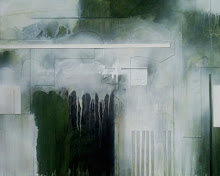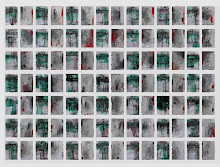
Exhibition book available from: collagemuseum.com/white-on-white-catalog.html
White On White
by Gary A. Bibb
The visual theme for this exhibition challenged the participants to answer the question: Can an artist effectively convey a cohesive visual statement by limiting the use of color? Furthermore, it wasn’t a simple monochromatic criterion that was enforced, but rather one that narrows the parameters even further - where color is nearly eliminated altogether.
Most artists incorporate color in their visual vocabulary for emotional impact and they utilize it, along with the other formal elements (i.e. line, form, value, texture, image, etc.), to communicate their message. Without the seduction and impact of color (or in the case of some pieces, keeping it to a minimum) the strength of the remaining elements determines the effectiveness of the artwork in conveying the content – the message. Reducing the palette to white forced the artists to reconsider their visual vocabulary and challenged them to incorporate a more simplified linguistic approach. By limiting the color boundaries, the artists were actually liberated to distill their imagery to its fundamental essence.
Within the context of this exhibition, composed predominately of collage and assemblage artists, it is of special interest to note that artists who gravitate to these artistic techniques generally possess an acute awareness of subtle variations in texture. The use of white is well suited in accentuating this attribute. All other colors (including gray and black) fail to display the full range of dynamic subtleties present in shadows cast within a white environment.
In summary, white can represent simplicity - the absolute minimal, the fundamental, or the elimination of irrational emotions; however, it can also convey light, purity, virtue, spiritual essence, Divine holiness, or a sense of hope and peace. Regardless of the generalized interpretations set forth, the artist and the corresponding audience ultimately determine the symbolic meaning of color and art. It is within this interpersonal relationship of artist and audience where we find the potential for consummation and satiation of our human desire for soul to soul communication.






No comments:
Post a Comment